Digital Archives are digitized collections of historical data, made
up of various topics, events or people. Prior to digitization,
archived material were stored physically and were only available for
inperson viewing. Digital archives are an approach to making this
historical information publicly and widely available through the
internet. Generally, the content stored in these archives are simple
in nature, yet their contexts and relationships are not clearly
defined among them.
We conducted a feasibility investigation to assess the user
experience and seek feedback on its design from the evaluation’s
participants. Based on the results of the investigation, it was
noted that the tool worked, was comprehensible and usable, but
lacked aesthetic features or additional interactive points. In
conclusion, we demonstrated that a tool for viewing interactive
concept maps is feasible to implement, comprehensible, and useful.
With minor tweaks, it can be embedded into a practical setting.
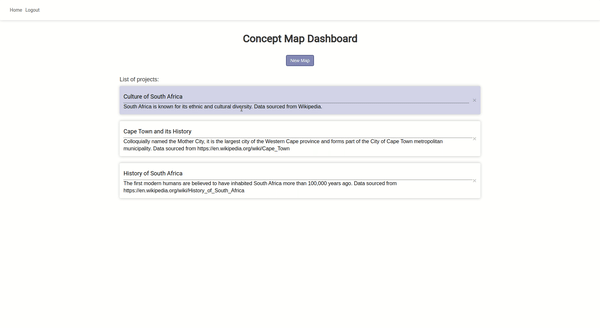
This study aims to answer the following research question:
What is the user’s experience when using a tool to model and view
relationships among digital objects and its supplementary
information in a concept map format?
Therefore the specific objectives of this project are:
(1) To assess the feasibility of the design and implementation of
this tool.
(2) To assess the end users’ understanding of
created outputs.
(3) To assess the comprehensibility and
usefulness of the interactive points within created outputs
Design and Implementation
MASH is made up of two major features; the Complex Object Creator
and Editor (COCE) and the COMR. COMR depends on COCE’s outputs to
render concept maps and supplementary information. COCE is used to
create maps and the supplementary information for each object on the
map. COCE then converts this into a serializable format that COMR is
able to process and display as an interactive concept map.
Components of COMR
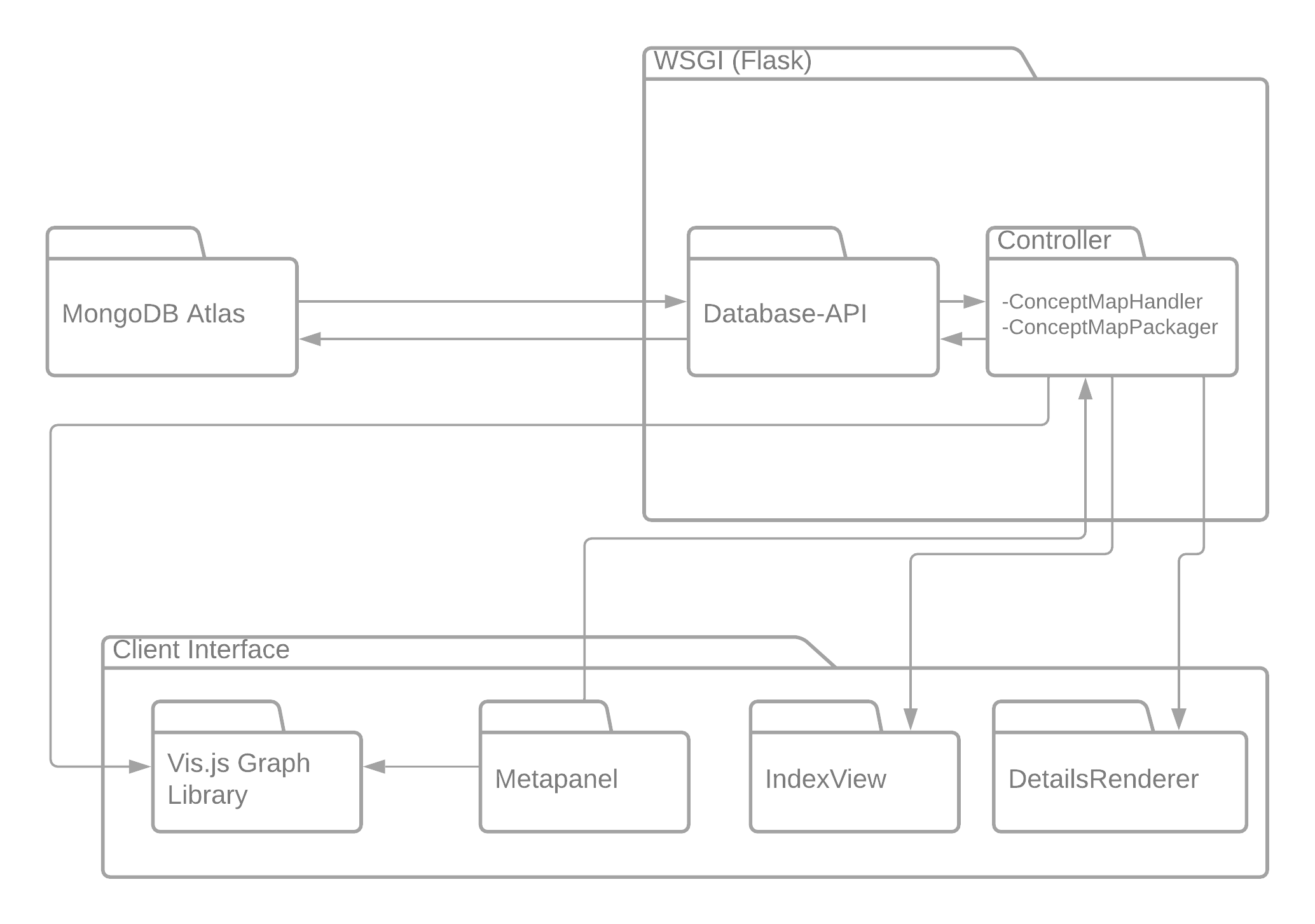
Flask Framework & MongoDB Atlas
COMR is served using the Web Server Gateway Interface convention
through the Flask microframework. Data persistence is served through
MongoDB Atlas, a cloud database-as-a-service platform. This houses
the serialized concept map data created by users on COCE.
Database-API
The Database-API serves as the Model component. It contains the
logic for accessing, reading, updating and deleting items in the
MongoDB Atlas database. It is written in Python. COMR uses this to
retrieve concept map data for displaying via its Controller
Controller
The controller is a high-level abstraction of the various functions
that make up the server-side processing for retrieving and sending
concept map data to the client. The controller is comprised of the
ConceptMapHandler and ConceptMapPackager.
ConceptMapHandler
The ConceptMapHandler uses the Database-API class to get JSON
formatted objects from the Database. This is activated once a User
requests to view a map. The ConceptMapHandler will receive the
request from the ClientInterface, retrieve the requested map from
the database and return the JSON map object to the client. Maps are
rendered on the client-side and not server-side. When a user selects
an object to explore on the concept map view in COMR, a request is
passed to the ConceptMapHandler that then in turn serves the page
for which the extended details of that object can be shown.
ConceptMapPackager
The ConceptMapPackager is activated once a user requests to view a
map offline. It clones the view the ConceptMapHandler will generate
and compresses the resulting outputs into a .Zip file, which is then
sent to the user as a downloadable file. Both viewing options are
accessible from within COCE’s dashboard, where a user requests to
view a project. The ConceptMapPackager’s trigger is activated by
navigating to a path on the domain where MASH is located and
entering a query string that contains the ID of a concept map to
trigger a downloadable file.
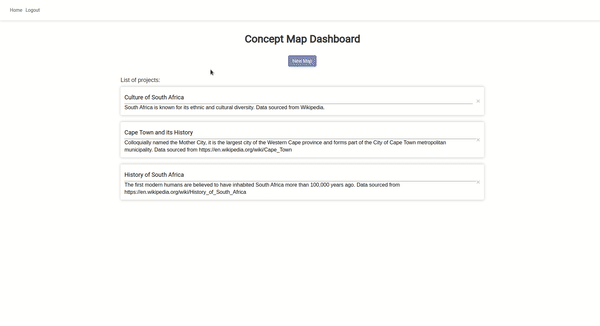
ClientInterface
This is the "front-end" of COMR. When a user requests to view a map,
this page is rendered. It uses embedded data provided by the
ConceptMapHandler. It is written in React, a Javascript Front-end
library. It is comprised of the Vis.js Graph Library, the Metapanel
and the IndexView.

Vis.js Graph Library
This feature renders the JSON object received from the
ConceptMapHandler. The JSON object is stored locally, and the map is
generated locally as well. It is done so through Vis.js, a
Javascript library used for diagramatic visualizations.
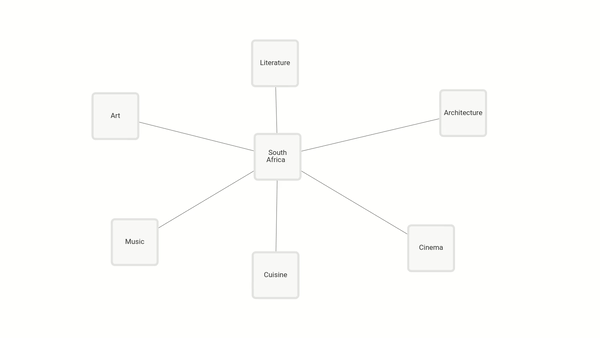
Metapanel
This panel contains a control for changing between the Map and the
IndexView, which will be discussed in the following section. On a
node click, the Metapanel displays the clicked node’s title and
brief description, with a button to allow the user to continue to
view the details if desired.
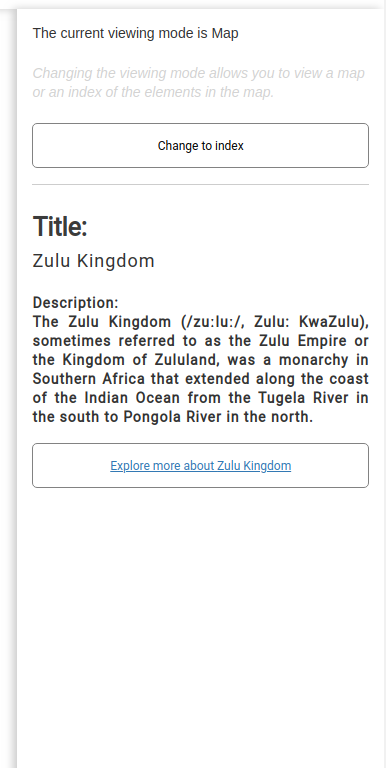
IndexView
The index view is a textual list representation of the concept map.
It uses the embedded data stored in the browser to create the list.
The list allows for nodes to be searched through its titles and its
brief descriptions.
The search feature allows 3 ways of
searching:
(1) "contains" search: which will check if the node’s
description or title contains the phrase. Ramsamy
(2) "equals"
search: which will check if the node title or description exactly
matches the phrase.
(3) "startsWith" search: which will check
if the node’s title or description starts with the phrase.
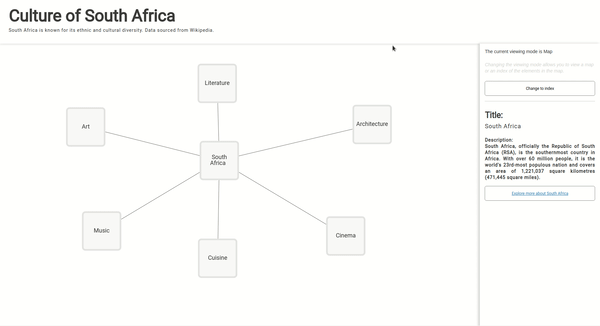
DetailsRenderer
Each node carries its own details data. This details data is
constructed by the user in COCE and is stored in an HTML format
within the JSON object. This data is then embedded into a details
page, by means of a Javascript insertion. Each node will have its
own details page generated on the web-server when a user requests to
view a map itself. This is done by a function call to a python
script that sequentially embeds each node’s details into a
predefined template. In the online view of the map, details are
displayed as separate pages.In the offline view of the map, details
are displayed inline on COMR rather than as separate pages.
Online View
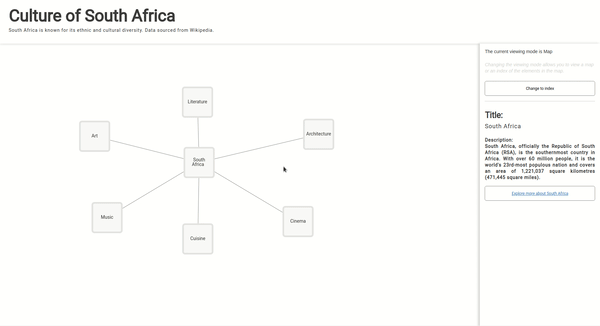
Offline View
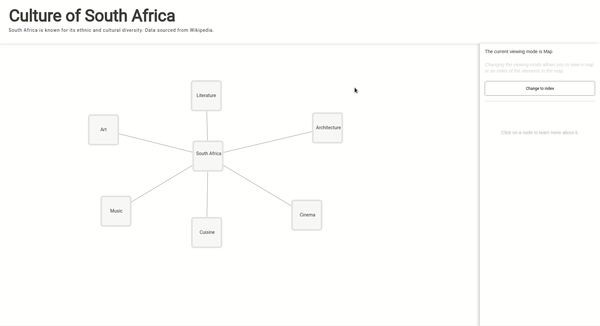
A questionnaire was made to assess whether this tool is usable,
understandable, and feasible to implement in a realistic setting.
This questionnaire asked participants to complete a list of tasks
that made use of COMR's features, they were then asked to give
feedback on these features.
It appears that the experience of using the tool is positive and
usable. Each section in the questionnaire had a median score of 4 or
above, indicating that the participants found COMR a usable and
understandable experience. Qualitative participant results can be
found
here. The table below
shows a comparison of median scores across the sections.
USE Questionnaire Results
| Section |
Median Score |
Standard Deviation |
| Usefulness |
4 |
0.13 |
| Ease of Use |
5 |
0.20 |
| Ease of Learning |
5 |
0.10 |
| Satisfaction |
4 |
0.15 |
Conclusions and Future Work
We approached this by conducting a feasibility investigation with 3
specific objectives. Based on the user evaluations, we conclude that
it is feasible to implement technically, by demonstrating a working
and usable prototype. End users largely understood created outputs,
being the concept maps with its corresponding node supplementary
information and the interactive points, such as the clickable nodes
and details pages, were comprehensible and useful. While these
objectives were met, it does not mean that the developed prototype
was perfect. There is room for improvement such as implementing
features and ideas mentioned in results and findings. Due to the
lack of target user participation in the evaluations, we were unable
to assess specifically if this would be a good platform for mapping
cultural heritage content, however we can assume that the platform
is understandable and usable in a context that is not domain bound.
Improved aesthetics of COMR should be considered as future work as
this was a desired improvement as supported by the evaluations. This
could also negate the "basic" feeling some participants reported.
The download function can be redesigned, to allow for the downloaded
view to mimic the online view, unlike the current inline display of
details implementation. This can be done by generating the details
pages on the client-side rather than server side, or, redesigning
COMR to allow for statically embedded resources rather than
dynamically inserted resources. Aside from reported participant
feedback, collaboration features would be beneficial to teams of
users and support for other device platforms such as mobile devices.







